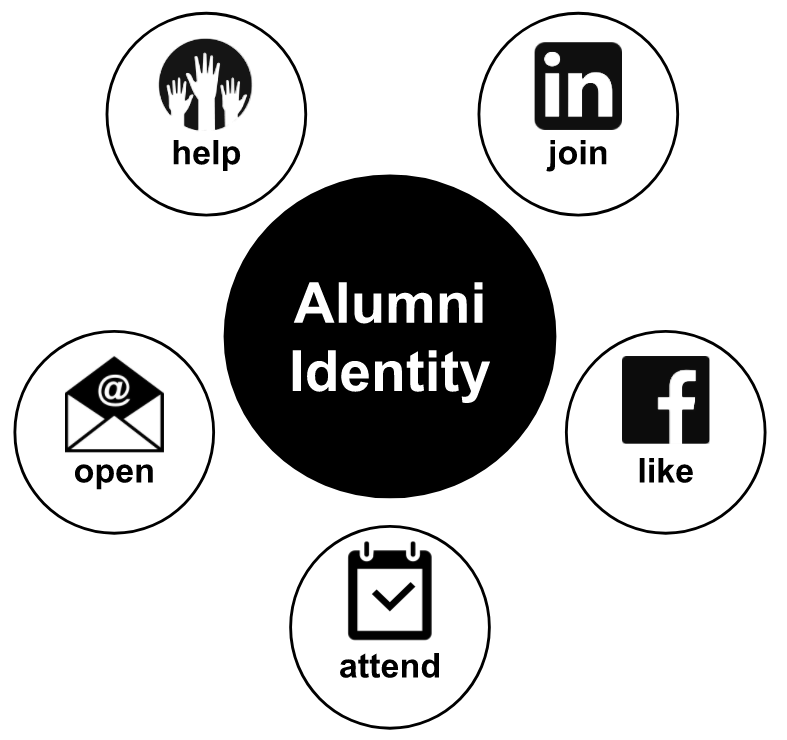Alumni Role Identity: A New Way Into the Alumni/Donor Psyche
Every graduate leaves their alma mater with a distinct impression of their time in school. Some will remember it fondly, others in a more negative light. At face value, there is probably little colleges and universities can do to change that impression post-graduation. But that hasn’t stopped institutions from trying and failing.
The nationwide decline in alumni giving is evidence enough of that.
For the last two decades, philanthropy in higher education has been hampered by the persistence of two major miscalculations:
An over-reliance on the use of student data to drive alumni engagement efforts.
A culture of sameness that perpetuates myths about the importance of alumni age, class year, and proximity to campus in alumni fundraising initiatives.
If not an appeal to their former student selves or current demographics, what, then, can advancement shops do to increase engagement and philanthropy among graduates?
One possible way forward is to operationalize Alumni Role Identity – a new approach to understanding the alumni-alma mater relationship that is rooted in social science.
Different from other concepts of affinity, a graduate’s alumni role identity is a direct reflection of how deeply their self-concept is related to their status as alumni. When calculated as an engagement score, alumni role identity is a quantitative measure of the degree to which a graduate’s role as alumni is a salient part of who they are.
The good news is this: independent studies of public and private university alumni have shown that increased alumni identity is positively associated with alumni giving AND open to direct influence through institutional actions (Dillon, 2017; McDearmon 2011, 2013).
For advancement professionals, operationalizing alumni identity offers a new way into the alumni/donor psyche – a dependable mechanism that separates alumni who are primed to give from those who are less inclined, along with a recipe for increasing alumni identity among graduates more broadly.
The primary factors and characteristics that increase a graduate’s alumni identity are, in order of influence:
Volunteering for a college/university (either formal or informal)
Participating in a college/university LinkedIn group
“Liking” a college/university Facebook page
Attending a college/university event
Opening a college/university alumni e-newsletter
Look again at these five factors and you’ll quickly realize a tectonic shift. A graduate’s level of alumni identity is predominantly influenced by virtual interactions with their alma mater.
The implication is clear. Colleges and universities can increase the alumni identity of their graduates – and in so doing, alumni inclination to give – by investing in strategies that prioritize institutional interactions with former students via e-communications and social media.
True, volunteering and event attendance contribute to increased alumni identity, however the number of graduates who participate in such activities is severely limited by interest, availability, and location, and not to mention costly in terms of staff time and resources for advancement shops to maintain.
The rising influence of virtual engagements on alumni identity is not without context. Social networks have completely changed what it means to be part of a community, and alumni communities are no exception (Porter & Donthu, 2008; Reddick & Ponomariov, 2013). Alumni communities of shared interests such as career, life stage, family, travel are becoming more common as traditional communities around age, class year, and region become less relevant.
So, how is alumni identity measured? How is it translated into a meaningful engagement score that can be used by alumni and fundraising professionals? What social media strategies actual work to increase alumni identity?
If you’re looking for practical tips and real-world examples of alumni identity in action, don’t miss my webinar on alumni engagement scoring.
Originally published in partnership with Salesforce.org.

